Barcoding News
Data tracking news, product updates, tips, and more
Datalogic Heron and Gryphon Barcode Scanners Provide Data Security in Medical Laboratories
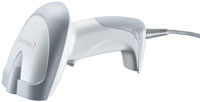
With its five laboratories, MEDILYS provides all locations of the Asklepios clinics in Hamburg and other hospitals with a broad spectrum of medical laboratory services. Approximately 7.5 million tests in the field of clinical chemistry and approximately 220,000 bacteriological submissions are processed each year.
The Challenge
Institutions of public health are subject to strict requirements due to numerous new regulations. The new guidelines of the Federal Medical Association for the quality assurance of medical laboratorial examinations became effective on April 1, 2008. each person or institution undertaking such laboratory examinations must meet the new requirements for pre- and post-analysis in particular and introduce a quality management system.
|
The Solution
Thirty to forty Datalogic barcode readers are delivered to the MEDILYS laboratories each year. Seven complete workplaces for the analysis of samples have been installed in the laboratory of the clinic in Wandsbek alone.
The central laboratory provides various machine-readable request forms, with sample labels on which the patient and sender data are printed. Examination requirements and other information are marked in the corresponding spaces. The labels of the request form with the ordering number of the form as well as the patient data are attached to sample vessels according to the request. The correctly labeled sample is then definitively classed with the request.
The sample is registered in the laboratory by the barcode reader. The laboratory information system assigns the sample to the order from the request without a voucher. There are workplaces specially configured for the various examinations.
The sample is stored in the archive following the analysis. After the examination is completed, the sample is again scanned by the analysis device and receives an archive number. There is always recourse to the sample when it is requested or designated again.
“Rapid and flawless registration of all arriving samples cannot be achieved without the use of the Datalogic barcode readers. The reading devices support us in undergoing a large number of analyses. †Ulrike Teege, executive assistant medical technician, MEDILYS Institute, clinical center Wandsbek, Hamburg.
Barcode labels ensure a certain identification of the sample.
35 Years On: Universal Product Code lives up to name

Â
From its beginnings as a service to help supermarkets speed up the checkout process, the Universal Product Code, known as the bar code, celebrated its 35th birthday Wednesday June 3rd as a technology that has expanded to applications far and wide.
One of the world’s best-known symbols, the UPC comprises a row of 59 machine-readable black-and-white bars and 12 human-readable digits. Both the bars and the digits convey the same information: the identity of a specific product and its manufacturer.
First developed to help grocery clerks quickly total customers’ bills, the first live use of a bar code took place in a Marsh Supermarkets store in Troy, Ohio, on June 26, 1974, when a cashier scanned a pack of Wrigley’s gum, according to information from GS1 US, a Lawrenceville, N.J., nonprofit that says it is the developer and administrator of the UPC for more than 200,000 businesses in the U.S.
Â
Microscan Launches New Website

Microscan has launched a new information-rich version of its popular Web site, www.microscan.com. The new global Web site reflects the company’s recent growth, as Microscan’s technology, patents, products and solutions offerings have tripled in the last 12 months.
The new site is simpler to navigate, provides more detailed information, enhanced user features, and reflects the company’s global growth in technology, products, and solutions.
Microscan’s range of technology is showcased in a new section providing educational information on machine vision, machine vision lighting, barcodes, and verification. An expanded section on solutions now includes industry and engineered solution content. New user experience features have been added, such as a video library for viewing product demonstrations and a free trial of Visionscape® machine vision software.
“Microscan has grown beyond barcode,†states Microscan president Jeff Timms. “We have grown beyond a product manufacturer and into a company focused on providing Track, Trace, and Control solutions to key markets, segments and customers. This is a completely different company now than it was just one year ago and our new Web site reflects this growth.â€
RFID: Track and Trace

Outsourcing continues to remain a dominant force throughout the pharmaceutical industry, as more companies than ever move to the “virtual world” of contract manufacturing. By incorporating outsourcing — a cost-effective, flexible approach to resource allocation and investment — into a company’s overall business strategy, pharmaceutical companies gain new opportunities to sustain long-term growth and competitive advantage. But the increasing globalization of the contract manufacturing market can lead to a rush to expand practices in low-cost countries, straining brand owners’ ability to manage and control their manufacturing, packaging and supply chain operations.
Despite outsourcing growth and the availability of Web-based tools, few manufacturing companies have successfully automated communications and operations to collaborate with suppliers, distributors and contract manufacturers. Instead, they still continue to rely on outdated processes that contribute to delays, errors and excessive inventory and costs.
To succeed with pharmaceutical outsourcing, a company must collaborate closely with partners. In order to succeed with collaboration, a company must have in place technologies and processes that improve control, visibility and velocity across the outsourced network — namely barcoding, radio-frequency identification (RFID) and track and trace capabilities.
Datalogic Gryphon 2D Plus Handheld Imagers used to Scan Drivers’ Licenses at Winn-Dixie
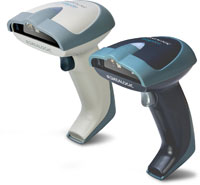
Datalogic Scanning is pleased to announce that Winn-Dixie Stores, Inc. is among the latest companies to select the Gryphon 2D Plus Imager for use in its 520-store Southeastern chain. The Gryphon 2D Plus Imager is helping Winn-Dixie improve upon its processes related to the sale of age-restricted items.
“With the new Gryphon 2D Plus Imager, we are now able to provide a higher level of service to our customers by speeding up the check-out process,†said Robin Miller, director of communications for Winn-Dixie. “The Gryphon 2D Plus Imager not only increases scanning speed, but it also enables our Associates to easily scan large items on the bottom of the shopping cart.â€
“In addition to the time-savings customers and cashiers will experience with the age-verification system, the Gryphon 2D Plus Imager is also equipped with the ability to read the new GS1 DataBar codes which are beginning to appear on produce and other variable weight items.â€,
Marc Lynn
Age-Verification using Drivers’ Licenses
“Retailers who sell regulated goods such as alcohol and tobacco must adhere to federal AAMVA standards to verify customer drivers’ license data, including age, date-of-birth, and license expiration date,†said Glen Feeley, Vice President, Sales – the Americas, for Datalogic Scanning. “Enabling retailers to comply with these regulations, the Gryphon 2D Plus Imager used in conjunction with Datalogic’s DL parsing logic, which is part of the Datalogic Aladdinâ„¢ software configuration program, eliminates manual data entry, increases efficiency at the retail point-of-sale, and prevents errors in the sale of controlled items.â€
Common Receipt Printer Interfaces
Use the chart below to identify what type of interface your receipt printer has.
Adapted from http://www.transact-tech.com/products/ithaca_8000_info_faq.html
 |
9 pin Serial InterfaceCable Required: |
 |
36 pin Centronics Parallel InterfaceCable Required: |
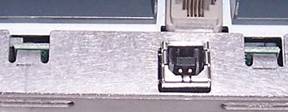 |
USB InterfaceCable Required: |
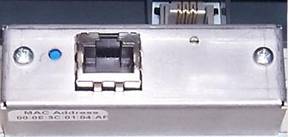 |
Ethernet InterfaceCable Required: |
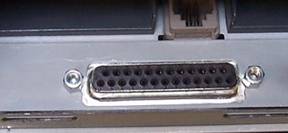 |
25 pin Parallel InterfaceCable Required: |
 |
25 pin Serial InterfaceCable Required: |
| Caution: The 25 pin Parallel and 25 pin Serial interfaces look exactly the same externally. They both use a 25 pin D-shell connection. |
|
 |
A closer look will reveal that the electronics on the actual interfaces boards are different. The best way to determine which 25 pin communication interface is present in the printer is to print a configuration listing from the printer. This listing will show either RS232 Serial or P1284 Parallel. See Manual Configuration for how to print out this listing. |
Datamax-O’Neil Portable Printers Become Wavelink-enabled for Device Management
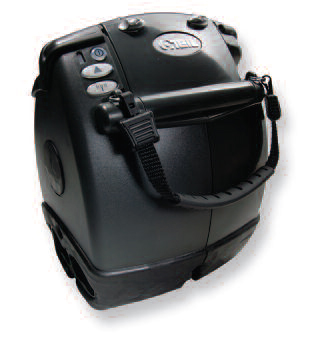 Partnership Provides Ease of Deployment and Integration into a Heterogeneous Networking Environment
Partnership Provides Ease of Deployment and Integration into a Heterogeneous Networking Environment
Wavelink Corporation and Datamax-O’Neil today announced that Datamax-O’Neil has selected Wavelink® Avalanche Mobility Centerâ„¢ (MC) software to pre-load on all of its wireless, 802.11-enabled mobile printers. This partnership demonstrates Datamax-O’Neil’s commitment to continuously increase the efficiency of its enterprise printing solutions and further solidifies Wavelink’s position as the standard in wireless enterprise management.
Datamax-O’Neil customers are now empowered to deploy industry-leading management software from Wavelink to remotely monitor and configure their Datamax-O’Neil wireless printers, along with additional wireless devices on the network. Customers using Avalanche MC benefit from extensive management functionalities that include centralized remote management, performance monitoring, software distribution and crucial device security.
“Wavelink is a complete management solution that can handle multiple device classes and brands,” said Endre Vargha, vice president of engineering and general manager for Portable Products at Datamax-O’Neil. “Partnering with them enables users that have already deployed Wavelink Avalanche in their network to easily add and manage Datamax-O’Neil printers as part of that environment.”
Wavelink customers can now easily manage and configure Datamax-O’Neil printers through the same interface they use for their other wireless devices. The agreement also adds to Wavelink’s industry-leading network of hardware partners that represent the world’s largest mobile device manufacturers across a broad range of devices.
“The trend for companies to be more mobile and implement wireless technologies continues its strong growth. As the number and type of devices increases, the ability to manage them easily through a single interface becomes even more critical,” said Wavelink president Lamar Van Wagenen. “Datamax-O’Neil is well-recognized as a leader in wireless mobile printing, and our partnership continues Wavelink’s focus on providing powerful management tools that work seamlessly in diverse environments with several different product brands and device types.”
The Datamax-O’Neil 802.11-equipped mobile printers that have been integrated with Wavelink Avalanche Mobility Center include the microFlash family of portable printers, O’Neil Compact portable printers (OC2 and OC3), and the LP3 label printer.
Maximize the success of your restaurant with mobility

Whether your restaurant is large or small, or offers fine, casual or quickserve dining, your servers and managers will have the tools they need to capture, transmit and access information as needed, wherever they happen to be. As a result, overall operational efficiency is maximized. Productivity is improved through process automation, improving staff utilization. Servers and managers are more effective, able to take the right action at the right time to deliver a level of service that will not only set you apart from your competition — but will keep your guests coming back. And the ability to increase sales and the number of guests while substantially improving service enables restaurants all over the world to achieve a new level of success…and profitability.
Download whitepaper: Maximize the success of your restaurant with mobility
Coca-Cola Testing RFID on Coke Machines

Coca-Cola has begun beta-testing an RFID-enabled drink dispenser that the company claims will transform the soft drink dispensing industry, by providing more than 100 drink options from a single machine. The machine, known as Freestyle, utilizes RFID technology to identify 30 or more cartridges, determine the quantity of flavoring inside each, and transmit data back to Coca-Cola indicating which drinks are being consumed, and when.
“We consider Freestyle nothing short of a revolution in the fountain dispenser business,” says Ray Crockett, Coca-Cola’s director of communications. The system not only offers consumers a vast choice of Coca-Cola beverages, he notes—from sodas to flavored waters—it also provides the company with real-time insight into what is happening in restaurants across the United States.
Continue Reading: http://www.rfidjournal.com/article/articleview/4967
RFID Has Role Protecting Human Health
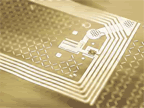
Coupled with collaborative technology, RFID can help manage efficient responses such as the recall of suspected food products and notifying affected parties. For example, a calf can now be tracked from birth to the slaughterhouse as it is in Australia, where the National Livestock Identification System legislation mandated, in 2005, RFID tagging for cattle stock.
There are even pilots where, combined with global positioning system (GPS) and “shock” technology, farmers can manage RFID-tagged cattle within certain geographical boundaries.
Let’s envision how RFID and collaborative technology can work together to help assure the quality of pork humans consume.




